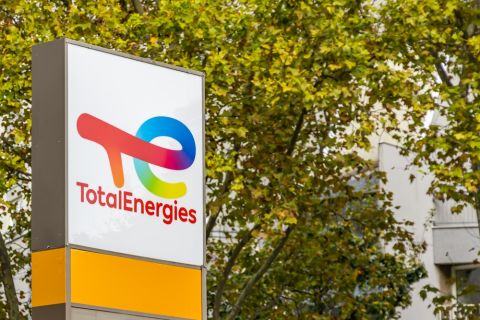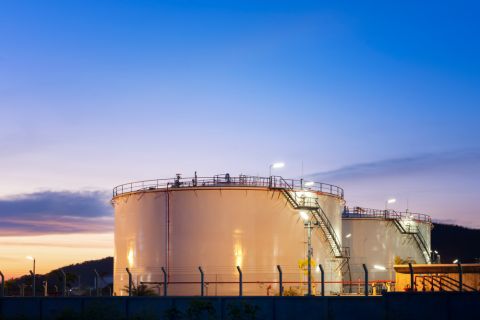The Mid-Continent Arkoma Basin includes the Woodford Shale in eastern and southeastern Oklahoma, and the Fayetteville shale in western Arkansas. While there is production from shallower formations such as the Hartshorne Coal, Cromwell Sandstone, Atoka Sands, and the Caney Shale, the main activity in the Arkoma Basin and focus of this article is on the Woodford and Fayetteville shales.
Located on the Arkansas side of the Arkoma Basin, the Fayetteville Shale is a Mississippian-age formation ranging in thickness from 50 ft to 550 ft and depth from 1,500 ft to 6,500 ft. Thickness increases going from west to east in the 
Basin. The Fayetteville is found in multiple eastern and central Arkansas counties, including Cleburne, Conway, Faulkner, Franklin, Jackson, St. Francis, Pope, Prairie, Van Buren, White, and Woodruff counties. The Fayetteville is about the same age and is seen as a geologic equivalent to the Barnett Shale. As with other shale gas plays, the Fayetteville was previously known to be a gas-bearing formation, but only started producing in a meaningful way when horizontal drilling and fracture stimulation were introduced.
The dominant player in the Fayetteville Shale is Southwestern Energy, with 875,000 net acres. Southwestern’s gross operated Fayetteville shale production as of mid-February was 750 MMcfe/d, up from nothing three years ago. The company drilled its first Fayetteville horizontal well in the first quarter of 2005. Improving well performance has resulted
from longer laterals, slickwater completions, and larger frac jobs. Average completed well costs are ~US $3 million, and estimated ultimate recoveries (EURs) are in the 3.0 Bcfe range. Petrohawk Energy, another large Fayetteville operator with 157,000 net acres, has an average well cost of $1.75 million to $2.25 million with EURs of 1 Bcfe to 4 Bcfe per well. Two other major players in the Fayetteville are Chesapeake Energy with 420,000 net acres and XTO Energy with 380,000 net acres. BP got into the play last year with 135,000 net acres through a joint venture with Chesapeake.
The Woodford Shale, a Devonian-age formation, generally ranges from 100 ft to 220 ft thick at depths of 6,000 ft to 11,000 ft. Although the first gas production was recorded in 1939, the play did not really develop until 2003-2004, first through vertical drilling. High gas prices and better completion techniques unlocked the potential of the Woodford as a horizontal play in 2005-2006. The Woodford is mostly in the Arkoma Basin of southeast Oklahoma, but drilling has extended the play west into the Anadarko Basin with Devon Energy and Cimarex Energy recently showing promising early results.
Our discussion here centers on the Arkoma Woodford. Approximately 750 horizontal wells have been drilled in the play to date. The largest producer from the Woodford is Newfield Exploration. Other main operators in the play include PetroQuest Energy, St. Mary Land & Exploration, Continental Resources, XTO, and Devon. The core of the play centers in Pittsburg, Coal, Atoka, and Hughes counties.
Newfield’sWoodford reserves grew 40% in 2008, gross operated production was up 65%and is expected to be up 30% in 2009. Ninety percent of its 165,000 net acres are held by production. Laterals at 4,500 ft headed to 5,000 ft. NFX expects to be able to add
Woodford reserves in 2009 at an efficient F&D cost of $1.50/Mcfe to $1.75/Mcfe, down from $1.75 to $2.00/Mcfe in 2008. Recent wells for PetroQuest have averaged slightly under $5 million to drill and complete with EURs in the 3.5 Bcfe to 4.0 Bcfe range. St. Mary cites a $4.5 million to $5.5 million cost and a 4 Bcfe EUR, while XTO also has a $4.5 million to $5.5 million cost with EURs of 2.5 Bcfe to 5.0 Bcfe.
As of the writing of this article, economics in the Arkoma Basin, particularly the Woodford, are underwhelming. A combination of low benchmark (Henry Hub) natural gas prices, differentials, transportation, and handling charges running as high as 20% to 30% of Henry Hub prices, and stubbornly high service costs have created the perfect storm of tough operating conditions. At flat $5 gas and a well cost of $5 million in the Woodford, the IRR would be 10% to 15%, but differentials have crushed the economics. The numbers are slightly better in the Fayetteville, but not by much. Bottom line, at current well costs and differentials, the Woodford needs Henry Hub prices of ~$6.50/Mcfe and the Fayetteville $5.75/Mcfe to $6.00/Mcfe to generate 20% type IRRs.

- Approximately 48,000 net acres in the Woodford Shale
- Over 18,000 net acres in the Fayetteville Shale
- Current production in excess of 46,000 Mcf/day net
In response to low prices, high differentials, and in an effort to drive down service costs that have not matched the decline in commodity prices, virtually every company has slowed drilling and completion activity in both the Fayetteville and Woodford. For example, one Woodford player has laid down all of its operated rigs including one that remains under contract, waiting for service costs to come down. Several of its wells that were drilled will not be completed until service costs such as pressure pumping and frac jobs come down another 10% to 20%.
Insufficient takeaway capacity has caused bottlenecks for Arkoma Basin gas and led to oversized basis differentials. This should be alleviated by several pipeline projects expected to come into service starting in the second quarter of this year. With more capacity coming into service, such as the Gulf Crossing, Midcontinent Express, and Boardwalk (Phase 2) Pipelines, differentials are expected to be cut in half or more, a big uplift for economics in the play. Boardwalk Pipeline Partners’ Gulf South pipeline expansion and Gulf Crossing pipeline, the MidContinent Express pipeline, and other projects will add 6.6 Bcf/d of capacity, moving Arkoma Basin and other gas into higher-priced southeast and eastern markets.
One aspect an individual company can control in the economic hierarchy is drilling an efficient well. Southwestern, for example, has reduced Fayetteville spud to spud time from 16 days at the beginning of 2008 to 13 days in fourth-quarter 2008.As can be seen in the chart on the previous page, driving costs down can be a big boost for the economics of a play. Newfield’s average cost to drill and complete a lateral foot in the Woodford has fallen 42%since 2007. Driving the cost reductions have been faster drilling times, the increased use of more efficient pad drilling, completion advances such as requiring less frac fluids, and increased lateral lengths. Although longer lateral wells cost more on an absolute basis, the F&D cost on a unit basis (per Mcf/e) is lower.
Recommended Reading
Woodside to Emerge as Global LNG Powerhouse After Tellurian Deal
2024-07-24 - Woodside Energy's acquisition of Tellurian Inc., which struggled to push forward Driftwood LNG, could propel the company into a global liquefaction powerhouse and the sixth biggest public player in the world.
TotalEnergies Joins Ruwais LNG Project in UAE
2024-07-11 - French energy giant TotalEneriges joined the two-train 9.6 million tonnes per annum Ruwais LNG project in the United Arab Emirates with a 10% interest. The LNG project is expected to start sending out cargos in the second half of 2028.
Fitch Downgrades New Fortress’ Default Rating, Citing Refinancing Risk
2024-08-14 - New Fortress Energy’s issuer default rating and senior secured debt were downgraded by Fitch, which cited a “highly constrained liquidity position,” as a reason behind its rating actions.
US LNG to Asia Has Lower Emissions Profile than Coal, Rystad Says
2024-06-12 - LNG emissions are up to 50% lower on average than for coal-fired power generation, even when the fuel is shipped over long distances, according to new research from Rystad Energy.
IGU: Global Liquefaction Capacity Expected to Grow by 75% by 2030
2024-07-02 - The International Gas Union (IGU) expects global liquefaction capacity to reach 700 mtpa by 2030, up 75% from 2023, driven by new FIDs and the start-up of other projects under construction.





